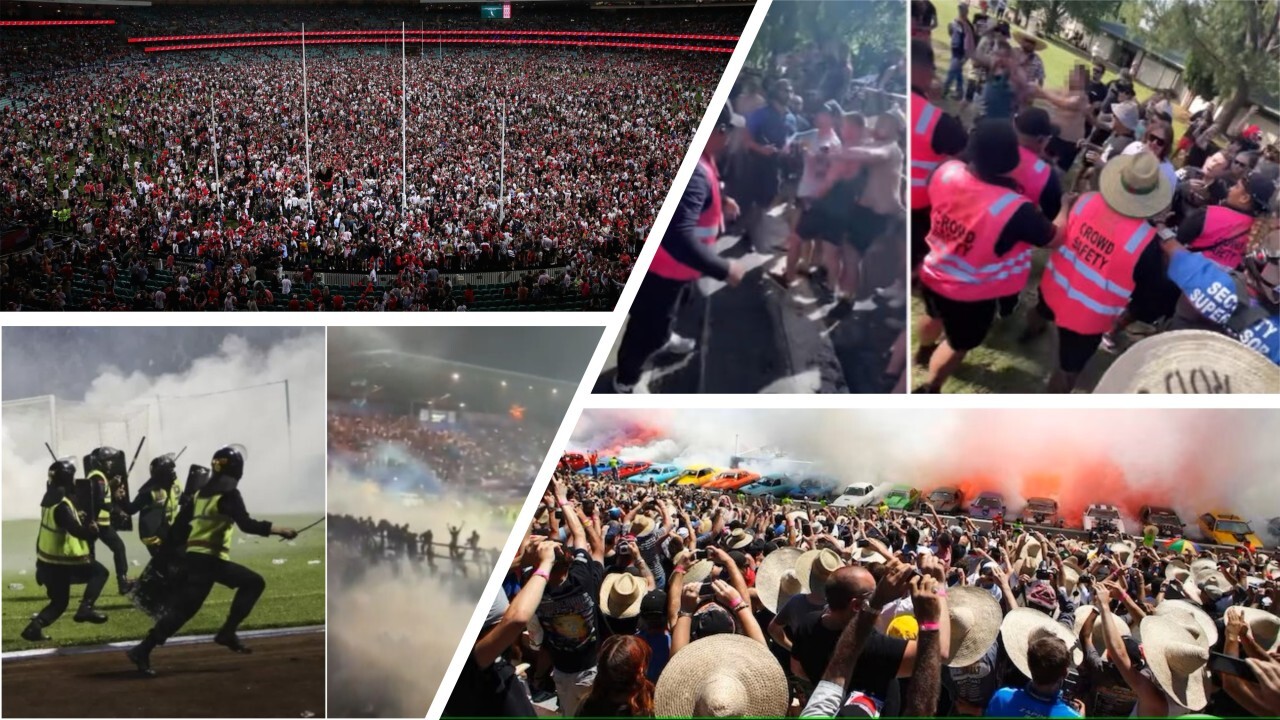Discover how IoT sensors are revolutionizing crowd management, enhancing safety, improving operational efficiency, and elevating the overall experience. Learn about technologies driving better outcomes in public spaces and events.
Large gatherings are increasingly common, from sporting events to concerts and festivals, ensuring the safety and smooth flow of crowds has become a top priority for event organizers and venue managers. Traditional methods of crowd management often rely on manual intervention and observation, leaving room for inefficiencies and potential safety risks. However, the integration of Internet of Things (IoT) sensors into crowd management strategies is revolutionizing the way we approach these challenges, offering a smarter and more proactive approach to maintaining visitor satisfaction and enhancing safety. An example of pre-arrival crowd management leveraging IoT is the implementation of staggered entry times to control the flow of visitors and avoid large crowds at specific entrances.
Understanding IoT Sensors in Crowd Management
Addressing the right questions before deploying an IoT crowd management project is essential. Organizations can ensure that they have a clear understanding of their objectives, requirements, and expectations, leading to a successful implementation and realization of business value.
Most of our clients ask familiar questions: Which IoT sensors are best for our project? When deployed strategically in crowded spaces like stadiums, arenas, and festival grounds, these sensors can provide real-time value and clear ROI.
1. CCTV Cameras
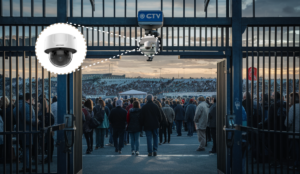
Best for : Guest management, Crowd management, Unauthorized access
CCTV cameras can be strategically positioned throughout a venue or event space to monitor crowd movements, identify potential security threats, and detect suspicious behavior in real-time. By providing comprehensive coverage of key areas such as entrances, exits, walkways, and gathering points, CCTV cameras enable security personnel to maintain situational awareness and respond promptly to any incidents or disturbances.
CCTV cameras play a crucial role in access control and perimeter security by monitoring entry and exit points, verifying the identity of individuals, and enforcing security protocols. Integrated with access control systems, CCTV cameras can capture images of attendees entering the venue, validate credentials, and detect unauthorized access attempts. In addition, CCTV cameras equipped with facial recognition technology can enhance security by accurately identifying individuals on watchlists or blacklist databases.
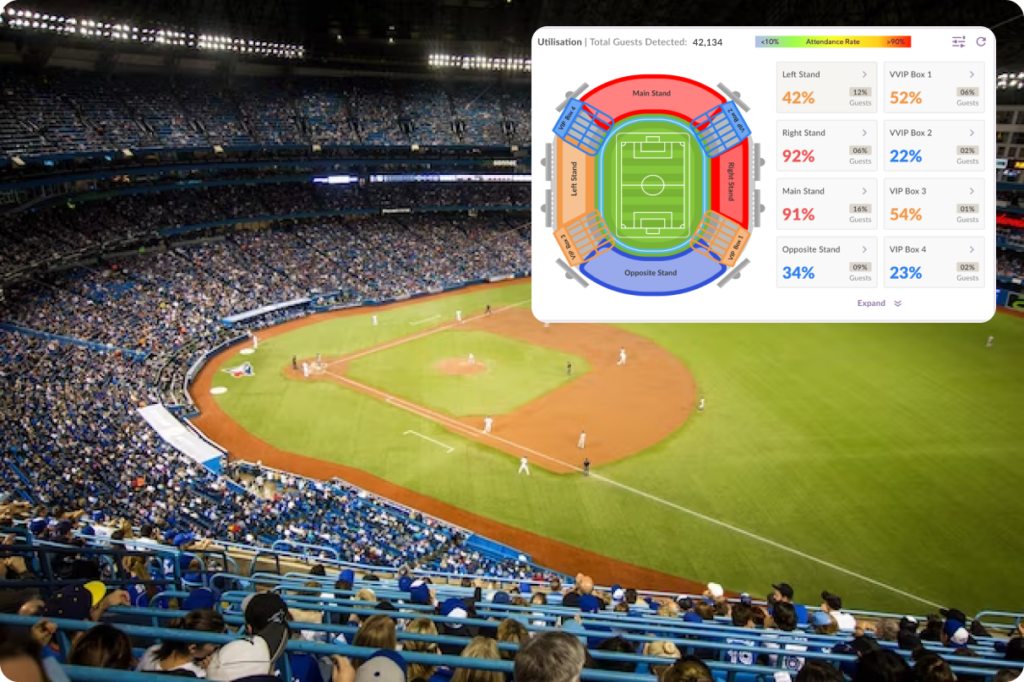
Check our case study where our Gaia platform has been deployed for 300,000 fans across 13 stadiums using CCTV cameras and Fan ID
2. Mobile app
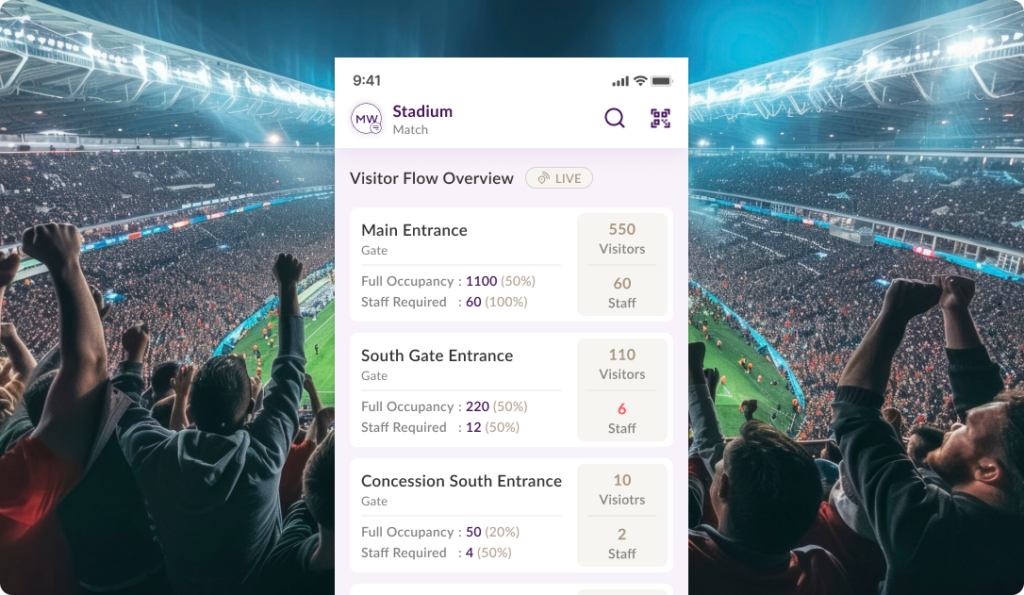
Best for : Fan Engagement, Impactful marketing
Leveraging mobile apps and Internet of Things (IoT) technology for crowd management can significantly enhance safety, efficiency, and the overall experience for event attendees. Different kinds of SDK’s can be integrated to mobile apps such us an event visitor app for effective crowd management.
From analytics and monitoring SDK’s to user communication integration, crowd management professionals can leverage these technologies to provide visitors with real-time updates, changes and important announcements. And improve incident management by sending instant notifications in case of emergencies.
3. RFID technology
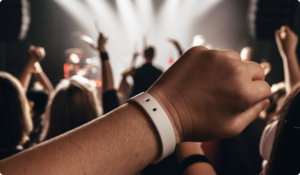
Best for : Single-event crowd management
RFID offers various applications for crowd management, providing efficient tracking, access control, and engagement opportunities. Here’s how RFID can be utilized effectively:
For access control, RFID badges or wristbands can serve as secure credentials for attendees, enabling quick and convenient access to event venues, designated areas, or exclusive facilities. RFID readers positioned at entry points can authenticate RFID tags and grant or deny access based on predefined permissions, ensuring smooth entry and reducing queuing times.
Furthermore, RFID technology can streamline the ticketing and registration process for events by enabling contactless ticketing and automatic registration. Attendees can receive RFID-enabled tickets or badges electronically, which can be scanned upon entry using RFID readers, eliminating the need for physical tickets or manual check-ins.
4. Bluetooth Low Energy (BLE) technology

Best for : VIP Guest Management
Using Bluetooth Low Energy (BLE) technology for crowd management offers several advantages due to its low power consumption, cost-effectiveness, and compatibility with a wide range of devices. BLE beacons can be strategically deployed throughout a venue or event space to detect the presence of nearby mobile devices. By measuring signal strength and proximity, organizers can accurately track the movement of attendees and identify congestion points in real-time. However, this requires attendees to have the relevant app (event or venue app) with Bluetooth on (which most devices have by default) and location always shared with the app, in order to be connected to nearby BLE tags even when the app is in background and / or phone locked.
The other way to use the BLE technology is to equip certain guests with small BLE tags clipped on their passes. This makes passes emit BLE signals within a 20-meter radius around the guests. These signals are then picked up by nearby staff phones and tablets. This allows staff to seamlessly recognise the guests and access all the key information, such as details about accompanying guests, guest booking details, preferences, potential raised issues, etc. It creates a virtual “red carpet” experience for guests at all times.
By leveraging the BLE-enabled guest passes and staff devices, a mesh network is established between staff without the need for physical cabling or connectivity infrastructure. This helps facilitate timely communication and automate the reporting of guest status throughout their entire journey.
Find out more with our case study to explore how BLE technology enables personalized experiences for event guests based on their proximity to specific locations or attractions.
Key Benefits of IoT Sensors in Crowd Management:
1. Real-Time Data Collection
IoT sensors continuously gather data on crowd density, flow rates, and congestion levels, providing event organizers with up-to-the-minute insights into crowd dynamics. For example, a music festival organizer will be able to use a combination of crowd management technologies, including network data and IoT sensors to gauge crowd densities at different locations on site, how many people are visiting the concessions and food stands, how long the queue for the toilets is, how many people are approaching the site and by what means they are arriving, for example, by car public transport or on foot
2. Anticipated crowd flows:
By analyzing historical data collected by IoT sensors, event organizers can identify trends and predict potential crowd-related issues before they escalate. This proactive approach allows for better resource allocation and crowd management strategies tailored to specific events and venues.
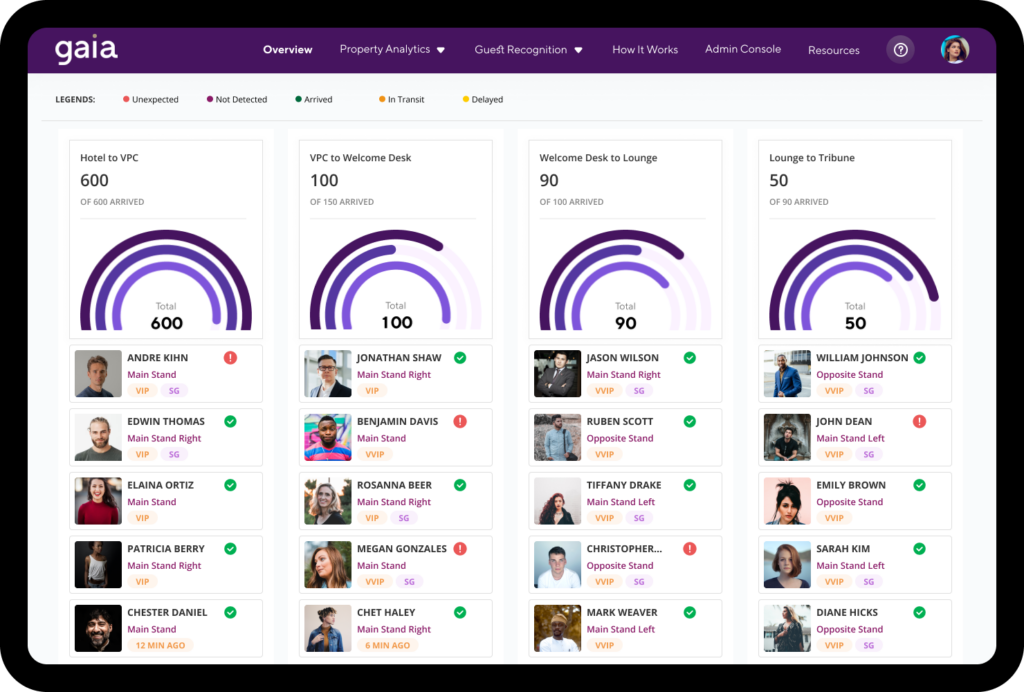
3. Enhanced Safety Measures:
IoT sensors can detect changes in environmental conditions, such as temperature, humidity, and air quality, that may impact crowd safety and comfort. By monitoring these factors in real-time, event organizers can implement appropriate safety measures, such as adjusting ventilation systems or providing additional shade, to ensure the well-being of attendees.
4. Optimized Resource Allocation:
With insights from IoT sensors, event organizers can optimize the allocation of staff, security personnel, and emergency services based on actual crowd movements and needs. This ensures that resources are deployed efficiently, maximizing their impact in managing crowds and responding to emergencies.
5. Improved Visitor Experience:
By leveraging IoT sensors to monitor crowd flow and identify congestion points, event organizers can design better layouts and traffic routes to enhance the overall visitor experience. Smoother entry and exit processes, shorter wait times, and reduced overcrowding contribute to a more enjoyable and memorable event for attendees.
Case Studies: IoT Sensors in Action
1. Tourism destination:
Tourism authorities leverage IoT technologies to manage their popular destinations with best crowd management practices. Helping them monitor and manage visitor flow to prevent overcrowding ,enhance visitor experience by providing real-time information, ensure safety and swift response to emergencies. And gather data for future planning and decision-making.
2. Smart Stadiums:
Several stadiums around the world have implemented IoT sensors to monitor crowd density, queue lengths at concession stands, and restroom usage in real-time. This data is used to optimize stadium operations, improve fan engagement, and ensure a safe and enjoyable experience for spectators.
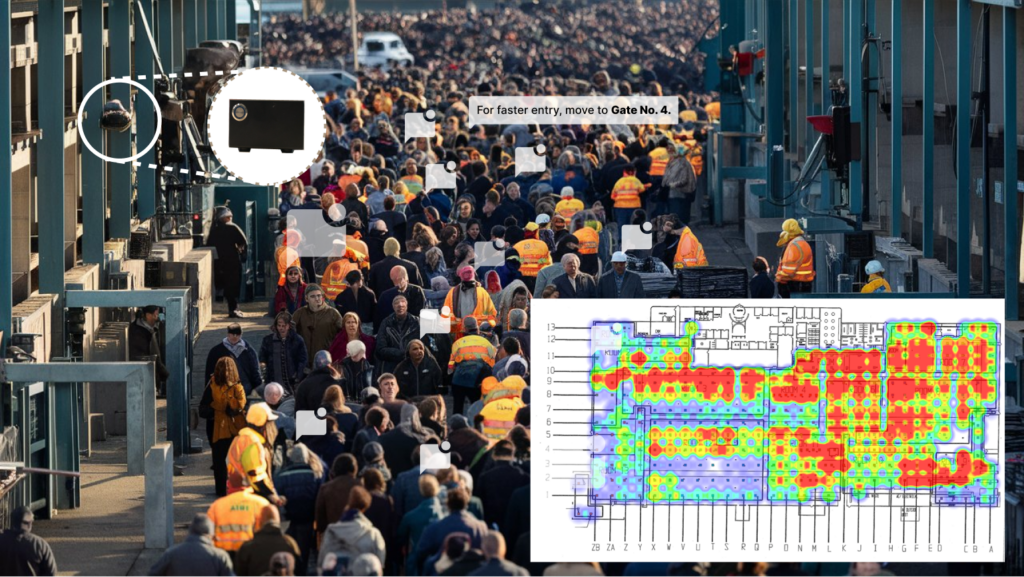
3. Music Festivals:
Music festivals often attract large crowds, presenting unique challenges for organizers in terms of crowd management and safety. By deploying IoT sensors throughout festival grounds, organizers can monitor crowd movements, identify high-traffic areas, and adjust security measures accordingly to prevent overcrowding and ensure attendee safety.
Overcoming Challenges and Considerations
While IoT sensors offer tremendous potential for enhancing crowd management, their implementation comes with its own set of challenges and considerations. These include privacy concerns related to data collection, interoperability issues with existing infrastructure, and the need for robust cybersecurity measures to protect sensitive information from unauthorized access or tampering.
Event organizers must also ensure compliance with relevant regulations and standards governing data privacy and security, such as the General Data Protection Regulation (GDPR). Transparent communication with attendees regarding the use of IoT sensors and the purpose of data collection is essential to build trust and mitigate privacy concerns.
Looking Ahead: The Future of Crowd Management
As IoT technology continues to evolve and become more accessible, the integration of sensors into crowd management strategies will become increasingly commonplace. Advancements in artificial intelligence (AI) and machine learning (ML) algorithms will enable more sophisticated analysis of crowd data, allowing event organizers to predict and prevent potential safety hazards with greater accuracy.
Moreover, the emergence of 5G connectivity will further enhance the capabilities of IoT sensors, enabling faster data transmission and lower latency for real-time monitoring and decision-making. With these advancements, the future of crowd management promises to be safer, more efficient, and more responsive to the needs of event attendees.
Interested in learning more? Talk to Neoma Sales today.
